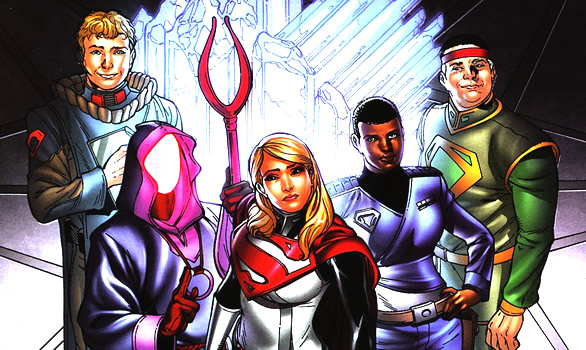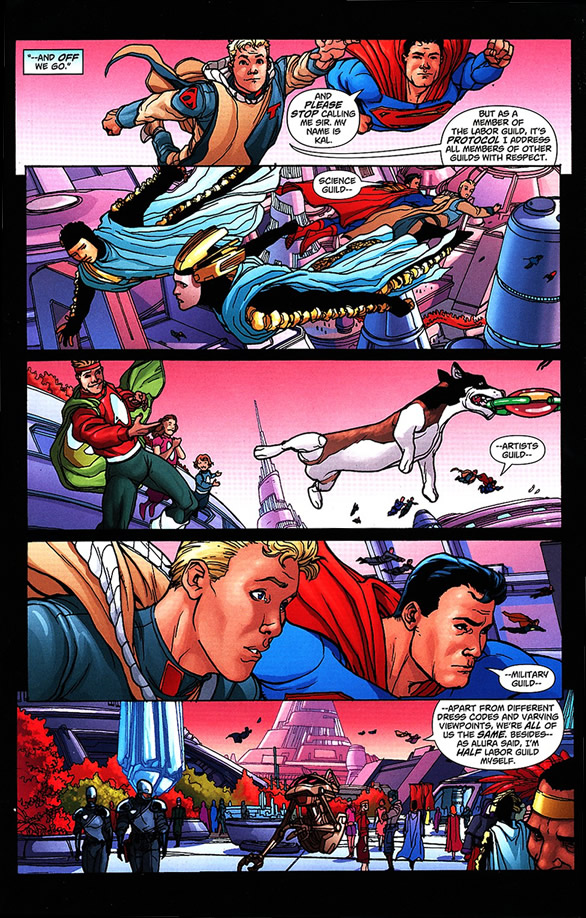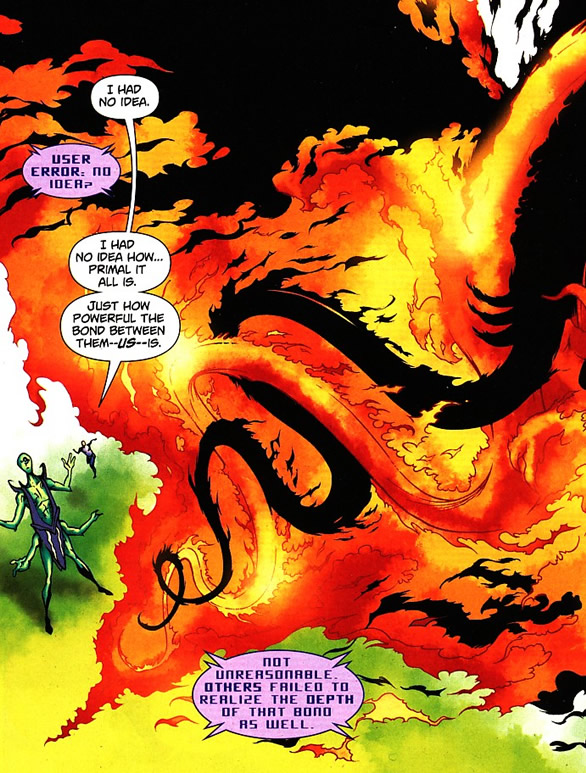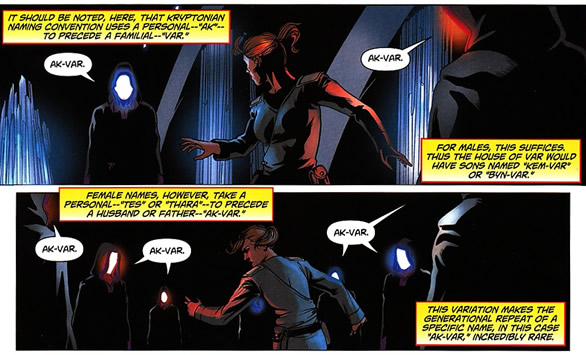It’s taken more than 70 years, but Superman finally has the one thing he’s always wanted: a home. Today sees the release of Superman: War of The Supermen #4, the final part of a massive, four-year-long arc running throughout various DC Comics titles that has seen his homeworld of Krypton come back to life – and the characters’ creators finally creating coherent cultures, class structures, architecture and religion for one of the most famous fictional planets of all time.
Krypton has, understandably, been fairly undeveloped throughout the 72 years since Jerry Siegel and Joe Shuster created the Man of Steel – Sure, Superman discovered reasons to travel through time to visit his dead homeworld on a fairly regular basis in the Silver Age, but those stories made the planet look more like a slightly-more science fictional version of 1950s America than anything else. It wasn’t until the 1970s that creators started considering the planet as an alien culture, but even those few stories were swept away by 1986’s reboot for the character, which replaced the cosy, colorful Krypton of old with a purposefully “alien” world of unemotional, hairless scientists, clones and crystals that was quickly destroyed and rarely revisited. Since then, different writers and artists had used different versions of Superman’s home planet at different times, leaving the character’s (fictional) history in flux, and his origins in doubt: Was he Superman because of or in spite of the planet he came from?
The roots of this recent definition of what Krypton was, and is, comes from One Year Later, DC’s 2006 line-wide relaunch of its superhero comics in the wake of its popular Infinite Crisis series. As writer (and now DC Chief Creative Officer) Geoff Johns took over Superman’s flagship series Action Comics, he started laying the groundwork for a story that would run over the next few years, including multiple alien invasions, the origins of the Legion of Super-Heroes, and full-scale war between worlds. The fact that Krypton ended up finally making sense in the process was just the greatest kind of imaginary collateral damage.
New Krypton
 The idea that part of Krypton had survived the explosion that killed Superman’s parents (and the rest of his race) isn’t new, but bringing the Bottle City of Kandor back into continuity – not to mention turning it into an artificial planet – and using it to make sense of the contradictory versions of Krypton that’ve appeared throughout Superman’s history required a lot of work. While it’s true that the “New Krypton” storyarc that has been running through the monthly Superman, Action Comics and Supergirl comics – as well as mini-series World of New Krypton and Last Stand of New Krypton – since the beginning of 2009 could’ve worked using a more generic version of Superman’s people, all wearing variations on Superman’s costume or Terence Stamp’s wardrobe from Superman II, the effort taken in creating a believable background for the plot has resulted in one of the most impressive, and most quiet, worldbuilding seen in comics in years.
The idea that part of Krypton had survived the explosion that killed Superman’s parents (and the rest of his race) isn’t new, but bringing the Bottle City of Kandor back into continuity – not to mention turning it into an artificial planet – and using it to make sense of the contradictory versions of Krypton that’ve appeared throughout Superman’s history required a lot of work. While it’s true that the “New Krypton” storyarc that has been running through the monthly Superman, Action Comics and Supergirl comics – as well as mini-series World of New Krypton and Last Stand of New Krypton – since the beginning of 2009 could’ve worked using a more generic version of Superman’s people, all wearing variations on Superman’s costume or Terence Stamp’s wardrobe from Superman II, the effort taken in creating a believable background for the plot has resulted in one of the most impressive, and most quiet, worldbuilding seen in comics in years.
Unsung hero of the (multiple) hours has been Pete Woods, the Oregon-based artist who not only illustrated the World of and Last Stand of New Krypton mini-series, but also created the look of New Krypton’s architecture for all artists working on the storyline, as well as designing some of the new world’s citizens. He’s made some of his design work available online, including this fly-through of the city of Kandor:
[youtube=http://www.youtube.com/watch?v=gslk17Ryq4c]
(Here’s his Metropolis fly-through, if you’d like to get your bearings for Superman’s home on Earth.)
Despite his stellar work on the storyline – Work that will continue as he joins Doctor Who‘s Paul Cornell as the regular creative team on Action Comics starting next month as the series takes on Lex Luthor as its new leading man – Woods isn’t responsible for one the story’s cleverest visual tricks: The Kryptonian Guilds.
Guilds
 How to make sense of the various outfits and aesthetics of Krypton’s inhabitants over the decades? Say that they’re all “real,” but worn by different social orders. Splitting Krypton’s inhabitants up into “guilds” of scientists, artists, soldiers, religious figures and workers allows the various eras of science fiction design to co-exist with some level of internal logic – The Artists’ Guild wear the colorful 1950s optimistic outfits, while the Scientists’ Guild wears the sterile 1980s reboot costumes, and so on.
How to make sense of the various outfits and aesthetics of Krypton’s inhabitants over the decades? Say that they’re all “real,” but worn by different social orders. Splitting Krypton’s inhabitants up into “guilds” of scientists, artists, soldiers, religious figures and workers allows the various eras of science fiction design to co-exist with some level of internal logic – The Artists’ Guild wear the colorful 1950s optimistic outfits, while the Scientists’ Guild wears the sterile 1980s reboot costumes, and so on.
The World of New Krypton series explored to social structure of the Guilds, including the fact that the Workers’ Guild had no say in governing the planet – Theirs was just to do, and die – and that the Military Guild has full control over the security of the planet, even if their decisions are at odds with the wishes of the government. What we saw was a society familiar enough to be understandable, but alien enough to seem unworkable to us – and, for that matter, to Superman.
Religion
 “Rao” has been a constant in Superman mythology since the 1970s, and has meant at various times either (or both) “God” and “Sun,” but it’s taken until now for there to be an actual Kryptonian creation myth, courtesy of Greg Rucka. His Action Comics run has centered around a superhero comics’ staple – superheroes powered by mythical gods – with a twist: None of the gods existed before Rucka and company invented them. The resulting tragedy of predestination, jealousy and unrequited requited love – Don’t ask, just read, as the saying goes – may not be literally the stuff of myths, but certainly feels like it.
“Rao” has been a constant in Superman mythology since the 1970s, and has meant at various times either (or both) “God” and “Sun,” but it’s taken until now for there to be an actual Kryptonian creation myth, courtesy of Greg Rucka. His Action Comics run has centered around a superhero comics’ staple – superheroes powered by mythical gods – with a twist: None of the gods existed before Rucka and company invented them. The resulting tragedy of predestination, jealousy and unrequited requited love – Don’t ask, just read, as the saying goes – may not be literally the stuff of myths, but certainly feels like it.
 (The Kryptonian creation myth in short: Rao created everything, and it was good, but his children didn’t play well together. You can pick up Action Comics #886 for the full version, or wait until it gets released in the Superman: Nightwing and Flamebird Vol. 2 collection later this year.)
(The Kryptonian creation myth in short: Rao created everything, and it was good, but his children didn’t play well together. You can pick up Action Comics #886 for the full version, or wait until it gets released in the Superman: Nightwing and Flamebird Vol. 2 collection later this year.)
The Future of Krypton
Well, considering that New Krypton was – spoilers! – destroyed in the first issue of War of The Supermen, the future doesn’t look too great for Krypton in a literal sense. But, as superhero comics find themselves franchising more and more often in an effort to shore up more market share, the existence of a coherent Kryptonian culture for the first time ever makes the idea of resurrecting the old World of Krypton flashback series that little bit more attractive. And, if nothing else, at least Superman will have some more idea about what he lost when the planet blew up in the first place, now. More importantly, the four years of effort put in by Geoff Johns, Pete Woods, Greg Rucka and other creators including James Robinson, Sterling Gates, Renato Guides, Pere Perez and many, many more have given us a world we can learn about, understand and then sympathize with Superman’s grief about losing. As surprising as it’s been to see Krypton so fleshed out – and to such depth, including naming conventions of Kryptonian children (See below) – it’s also unsurprising that it came from these creators; Johns and Rucka worked on the similarly detailed 52, after all, and co-writer Robinson was behind the acclaimed (and similarly concerned with continuity minutae) Starman… These are writers who specialize in worldbuilding, taking the opportunity to go wild and running with it, to the benefit of everyone. Well, apart from all those poor Kryptonians that got blown up, of course.
More On Techland:
Comics On Our Pull List 5/26/10
A Brief, Selective Timeline of 3 1/2 Or So Legions of Super-Heroes


